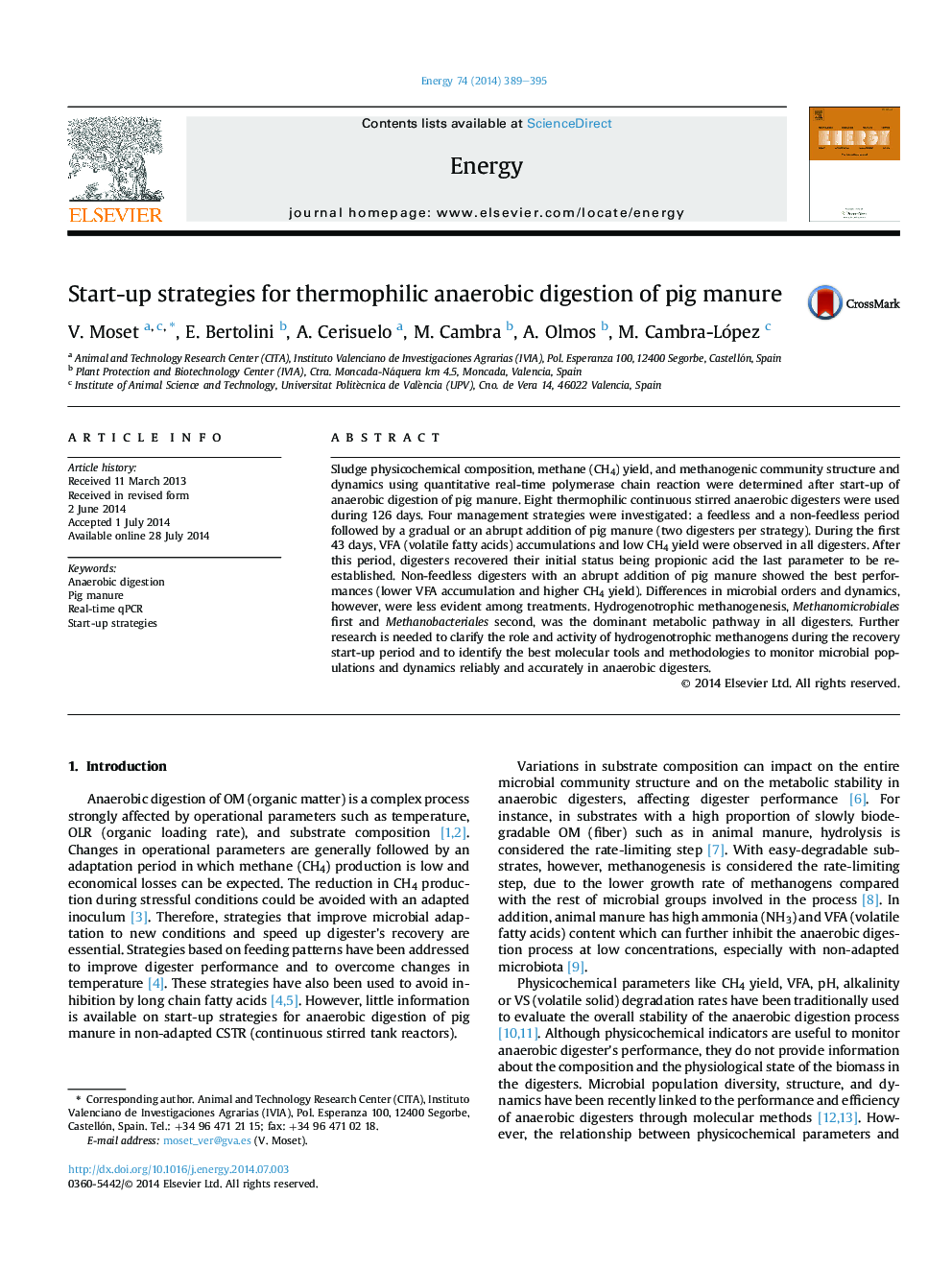| Article ID | Journal | Published Year | Pages | File Type |
|---|---|---|---|---|
| 1732474 | Energy | 2014 | 7 Pages |
•Four start-up strategies for thermophilic anaerobic digestion of pig manure were tested.•Physicochemical composition, methane yield and methanogenic community were determined.•During the first 43 days, a decline in reactor's performance occurred.•The best start-up strategy was non-feedless with an abrupt addition of pig slurry.•Hydrogenotrophic methanogenesis was the dominant metabolic pathway.
Sludge physicochemical composition, methane (CH4) yield, and methanogenic community structure and dynamics using quantitative real-time polymerase chain reaction were determined after start-up of anaerobic digestion of pig manure. Eight thermophilic continuous stirred anaerobic digesters were used during 126 days. Four management strategies were investigated: a feedless and a non-feedless period followed by a gradual or an abrupt addition of pig manure (two digesters per strategy). During the first 43 days, VFA (volatile fatty acids) accumulations and low CH4 yield were observed in all digesters. After this period, digesters recovered their initial status being propionic acid the last parameter to be re-established. Non-feedless digesters with an abrupt addition of pig manure showed the best performances (lower VFA accumulation and higher CH4 yield). Differences in microbial orders and dynamics, however, were less evident among treatments. Hydrogenotrophic methanogenesis, Methanomicrobiales first and Methanobacteriales second, was the dominant metabolic pathway in all digesters. Further research is needed to clarify the role and activity of hydrogenotrophic methanogens during the recovery start-up period and to identify the best molecular tools and methodologies to monitor microbial populations and dynamics reliably and accurately in anaerobic digesters.
